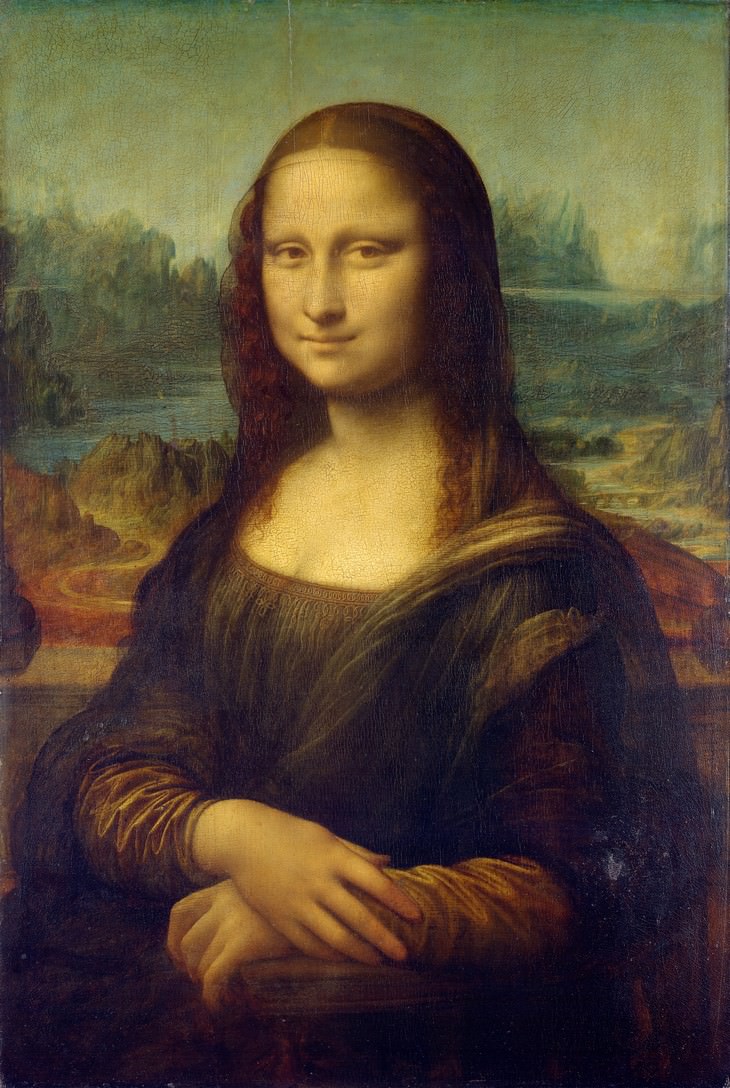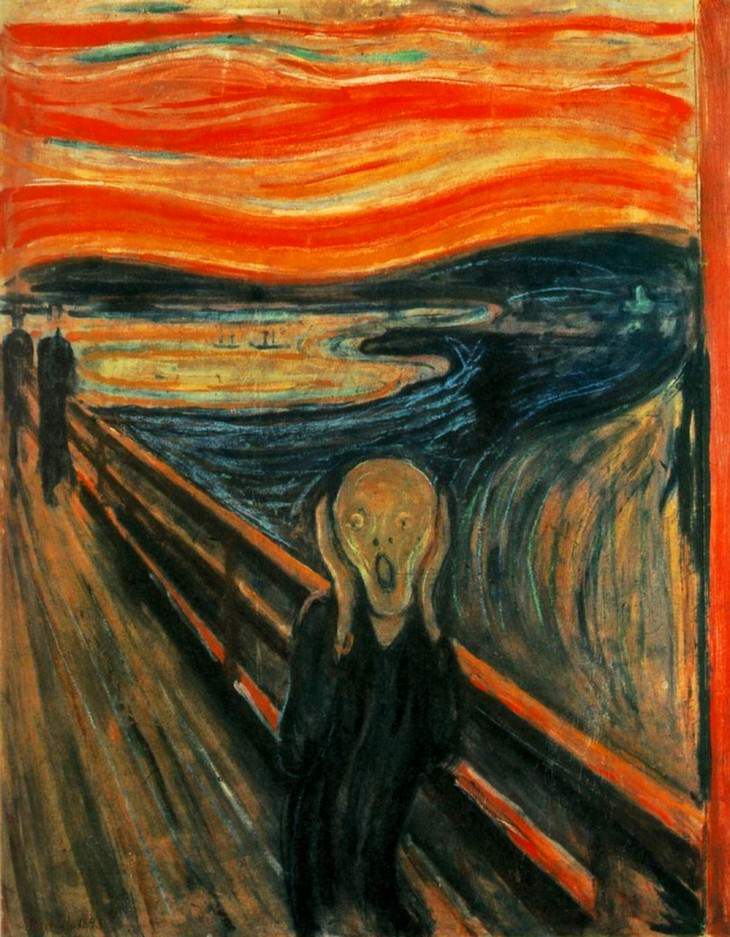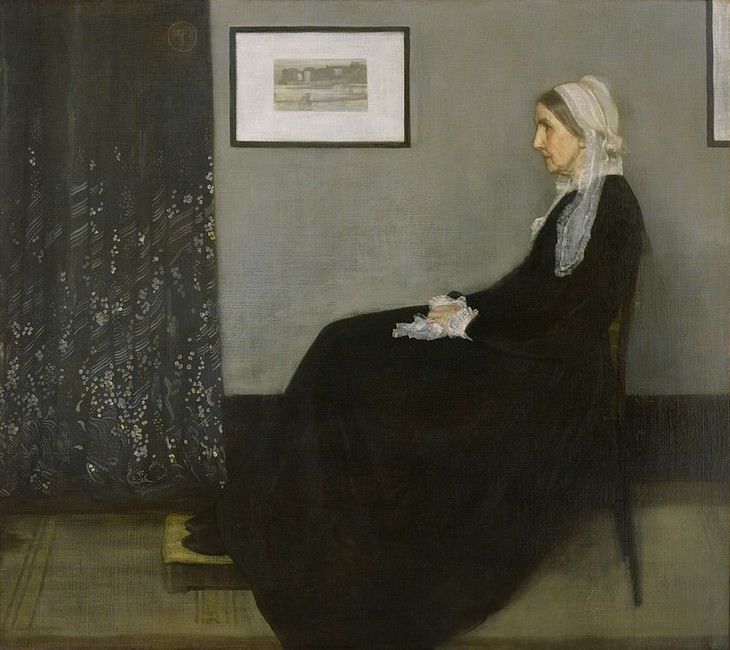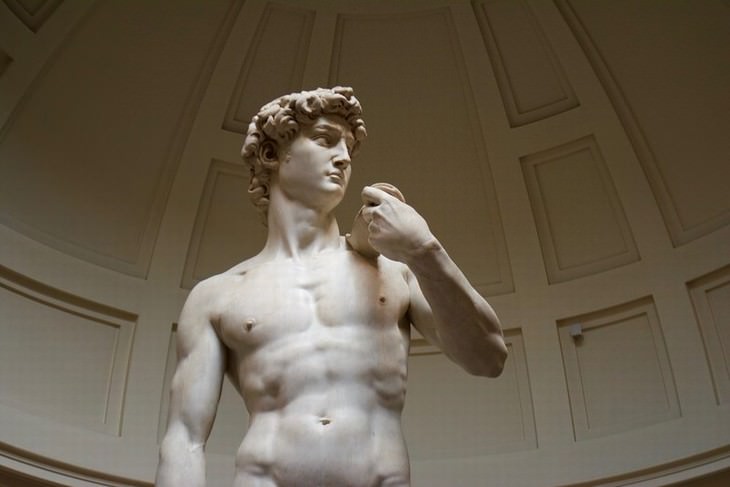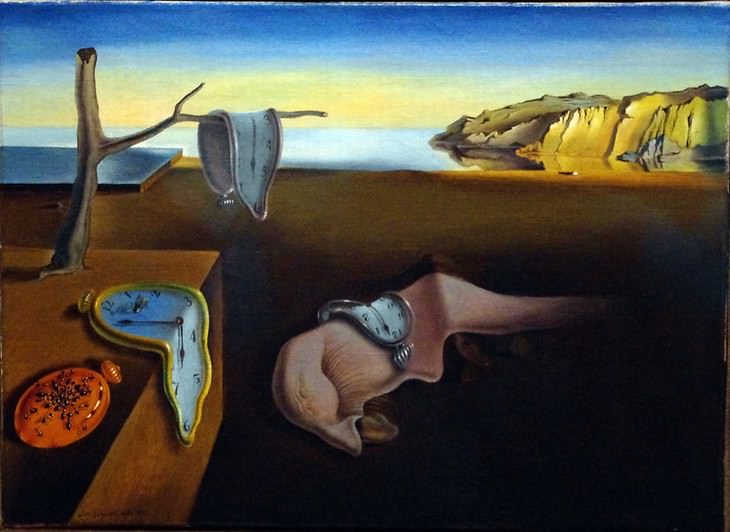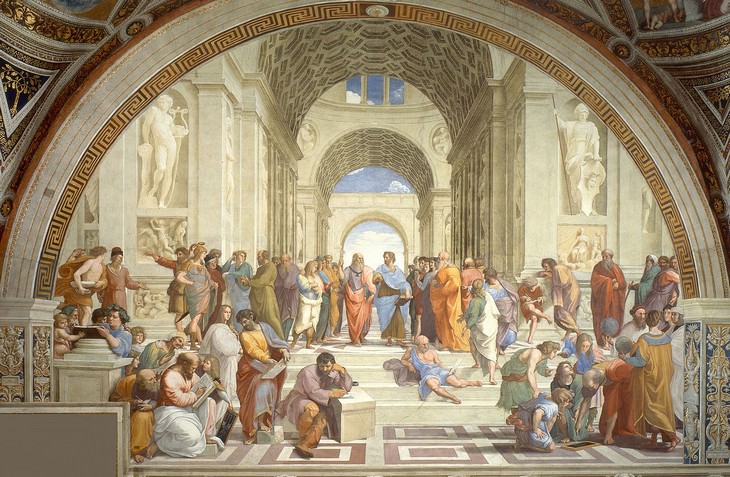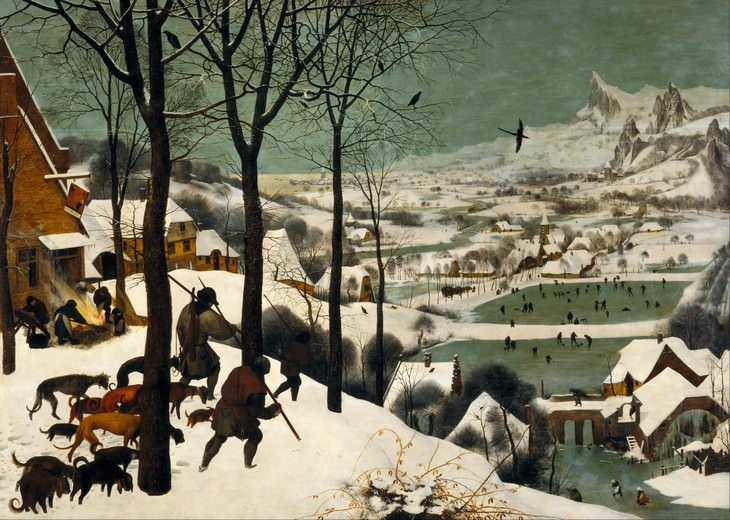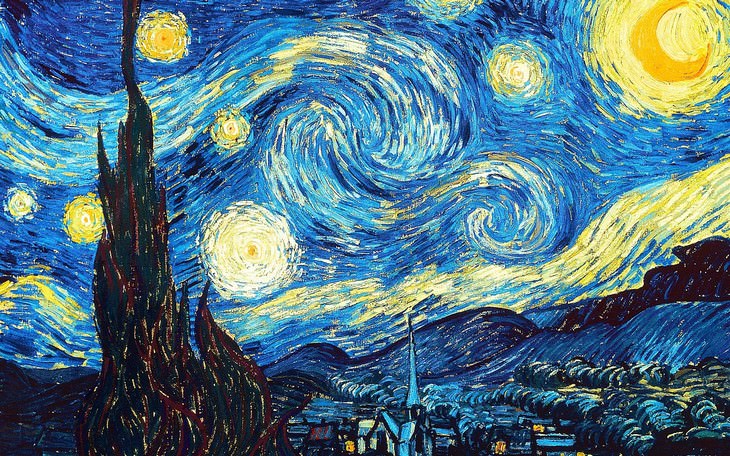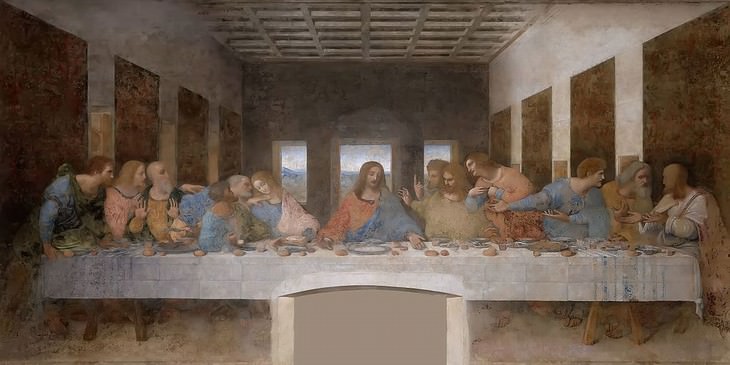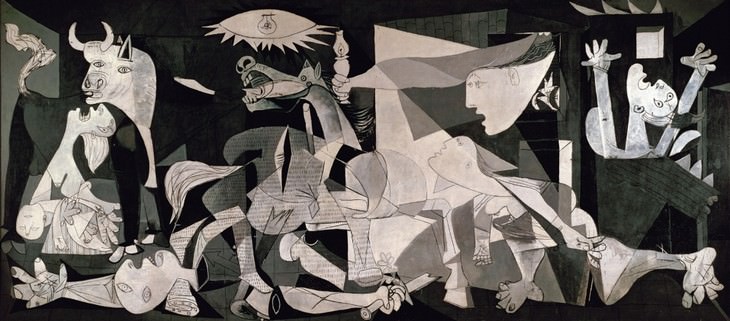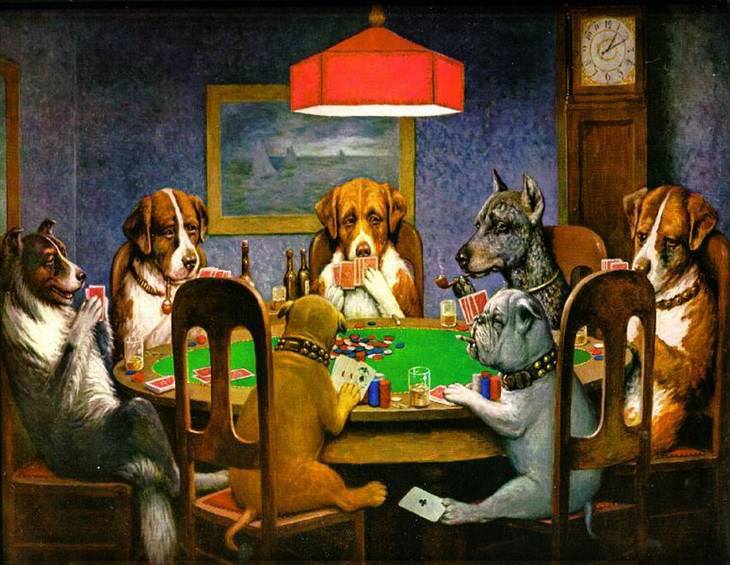1. 'The Mona Lisa' (1503) by Leonardo da Vinci
Let’s start from the lady with the mysterious smile, that likely has more secrets surrounding it than any other painting, the Mona Lisa. As you may have already noticed yourself, the beautiful Mona Lisa has no clearly visible eyebrows or eyelashes, which had puzzled art historians and art connoisseurs alike for years.
Some claimed that shaving one’s eyebrows was a fashion trend at the time, but in 2007, a French engineer named Pascal Cotte made a stunning discovery. He completed ultra-high-resolution scans of the painting, which revealed that Mona Lisa was originally painted with eyelashes and more visible eyebrows. It appears that they gradually disappeared over time, likely as a result of overly meticulous cleaning.
2. 'The Scream' (1893) by Edvard Munch
Though this series of paintings by the famous Norwegian expressionist is not everyone's cup of tea, one thing can't be taken away from it: it definitely captures a mood. What most people don't know is that the artist was inspired to create his masterpiece by a special sunset.
As the artist writes in his journal, “One evening I was walking along a path, the city was on one side and the fjord below. I felt tired and ill. I stopped and looked out over the fjord—the sun was setting, and the clouds turning blood red. I sensed a scream passing through nature; it seemed to me that I heard the scream. I painted this picture, painted the clouds as actual blood. The color shrieked. This became The Scream.”
In fact, the artist did not exaggerate in his description of the sunset, as what he and many others at the time had witnessed was the aftermath of the powerful Krakatoa volcano eruption in 1883, which tinted the skies red for months.
3. 'Whistler's Mother' (1871) by James Abbott McNeill Whistler
The famous painting is so iconic it's often called an 'American Icon' or 'the Victorian Mona Lisa', partly because this very artwork cemented America's artistic authority in Europe, as it was the first American painting to be taken to France. But did you know that 'Whistler's Mother' is not its actual name?
The name of this painting given by its author is 'Arrangement in Grey and Black No.1.', and Whistler himself didn't consider this painting a portrait. In his book 'The Gentle Art of Making Enemies', the painter expressed his annoyance with the public's distorted impression of the painting in the following words, "Take the picture of my mother, exhibited at the Royal Academy as an Arrangement in Grey and Black. Now that is what it is. To me it is interesting as a picture of my mother; but what can or ought the public do to care about the identity of the portrait?"
4. 'David' (between 1501 and 1504) by Michelangelo
David by Michelangelo is certainly one of the most recognized, if not the most recognized statue on the planet, but the marble slab that was soon to become this very masterpiece was actually handed down from one sculptor to another several times, possibly due to its mediocre quality. After the statue was knocked off by vandals in 1991, the chipped pieces of marble were sent for microscopic analysis and revealed that the material is quite porous, which means that it will degrade faster.
This might be the reason why both Agostino di Duccio and Antonio Rossellino, both previous owners of the marble slab, have abandoned it, and it was left unused for nearly 45 years before Michelangelo got his hands on it and turned it into the greatest sculpture in Renaissance art.
5. The Persistence of Memory (1931) by Salvador Dali
Salvador Dali famously called his artworks "hand-painted dream photographs", a statement worthy of the most iconic surrealist painter, but it turns out that by far not all of the quirky objects he painted were rooted in his dream world.
For one, he once commented that his famous soft watches were inspired by chunks of Camembert cheese left by his wife Gala on the table that he observed melting in the sun. Do you see the resemblance?
6. 'The School of Athens' (1509–1511) by Raphael
Raphael's greatest masterpiece adorns the walls of the Apostolic Palace in the Vatican, and it celebrates the greatest scientific minds known to Raphael. The fresco features Socrates, Plato, Aristotle, Ptolemy, Zoroaster, Raphael himself and many other identifiable figures.
However, among the 21 philosophers represented in the 'The School of Athens', many remain unknown to this day. What further complicates the picture is that many of the identified figures could represent several philosophers or could even combine the features of several great thinkers, so really, for the most part, art historians have no idea who they could be.
7. 'The Thinker' (1904) by Auguste Rodin
There are 28 casts of Auguste Rodin’s world-famous sculpture scattered throughout the globe today, but the sculpture didn't actually originate as an independent piece. The first, seventy-centimeter tall version of the renowned statue was the centerpiece of a large scale 1880 project titled 'The Gates of Hell'.
This original piece was inspired by Dante’s Inferno, and The Thinker in the middle of it is supposed to be none other than Dante Alighieri himself. The now-famous Thinker didn't come into existence until much later, in 1904, and it is a significantly enlarged version of the original statue.
8. 'The Hunters in the Snow' (1565) by Pieter Bruegel the Elder
This artwork created by the famous Dutch painter Pieter Bruegel the Elder is one of the five surviving pieces that were originally part of a huge series of paintings dedicated to the different seasons of the year.
This particular piece, also known under the name 'The Return of the Hunters' depicts country life during a particularly harsh winter. Interestingly enough, this very winter marked the beginning of a period of global cooling in Europe known under the nickname The Little Ice Age.
9. 'The Starry Night' (1889) by Vincent Van Gogh
'The Starry Night' is another one of those iconic paintings that are so widely-known it definitely became part of pop culture nowadays. This painting is one of the greatest examples of Van Gogh's individual artistic style, but the reality is that the artist himself wasn't particularly pleased with it, as he admitted in a letter to his brother Theo.
Another interesting fact about this masterpiece is that the artist actually painted it from memory, capturing the view from the east-facing window at the Saint-Rémy-de-Provence mental facility he was staying at the time.
10. 'The Last Supper' (1495–1498) by Leonardo da Vinci
Yet another masterpiece by the ultimate Renaissance man Leonardo da Vinci is 'The Last Supper'. Many people don't realize that the mural is quite large, measuring 180 x 360 inches. The masterpiece is located at the Convent of Santa Maria Delle Grazie in Milan.
Originally, the masterpiece also included Jesus' feet, but in 1652, a doorway was installed in the refectory and the mid-bottom part, which happened to be Jesus' feet, were destroyed to make space for the doorway.
By far not everyone can get abstract art, but there are those rare, unique paintings that are just so expressive and resonate so much with a certain era that they are just too powerful to ignore. Most definitely, Picasso's 'Guernica' is one such piece. The artwork reflects the horrific aftermath of the Guernica bombing by German and Italian warplanes. The painting became a symbol of the devastation and suffering during WWII.
During his life in Nazi-occupied Paris during World War II, Picasso had a photo of 'Guernica' in his apartment. Upon seeing this photo, one Nazi officer allegedly asked the artist, “Did you do that?” to which Picasso responded, “No, you did.”
12. 'Dogs Playing Poker' (1894) by Cassius Marcellus Coolidge
Let's end this article on a high note and look at a painting of dogs playing poker by Cassius Marcellus Coolidge. As you may or may not have noticed, this is not the most famous version of it (the one that features a collie in the middle).
This is because there are actually 18 paintings in this series featuring canines and card games. Interestingly, all of these paintings were commissioned by the company Brown & Bigelow to advertise cigars. Funny as it may sound, the paintings became the hallmark of American kitsch art and one of these weird little paintings was sold for $658,000 in 2015.

